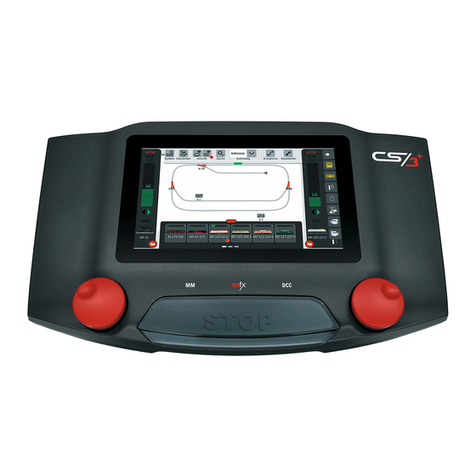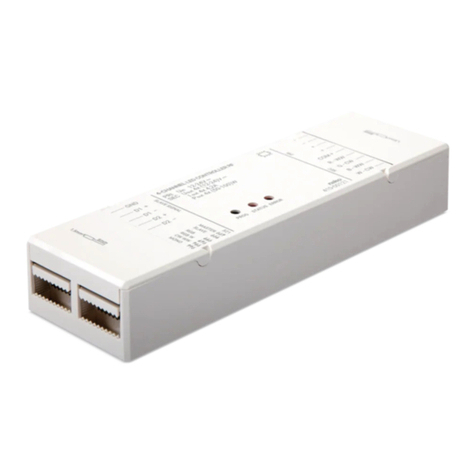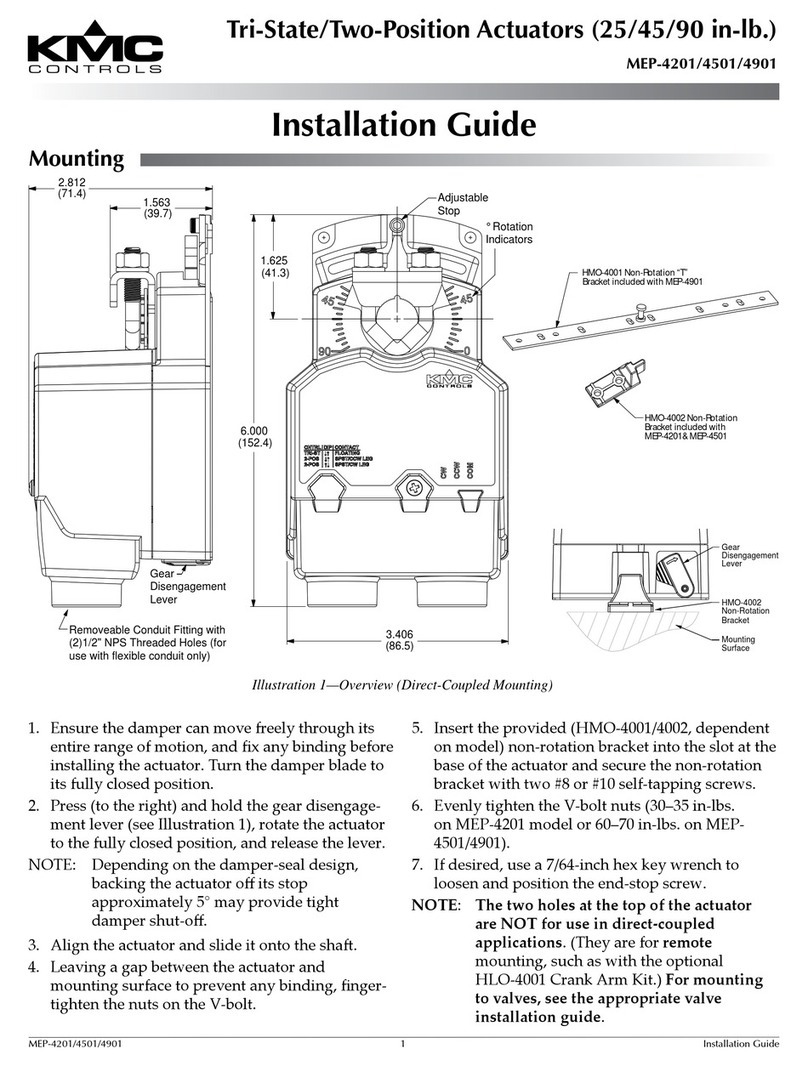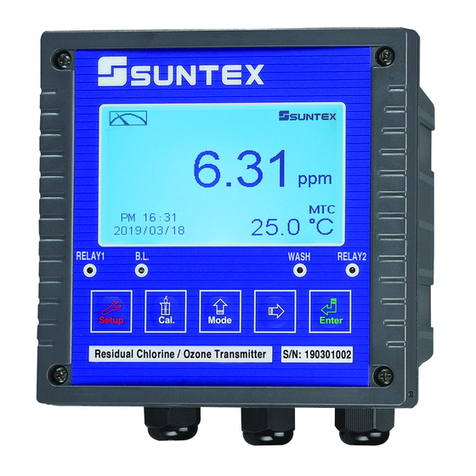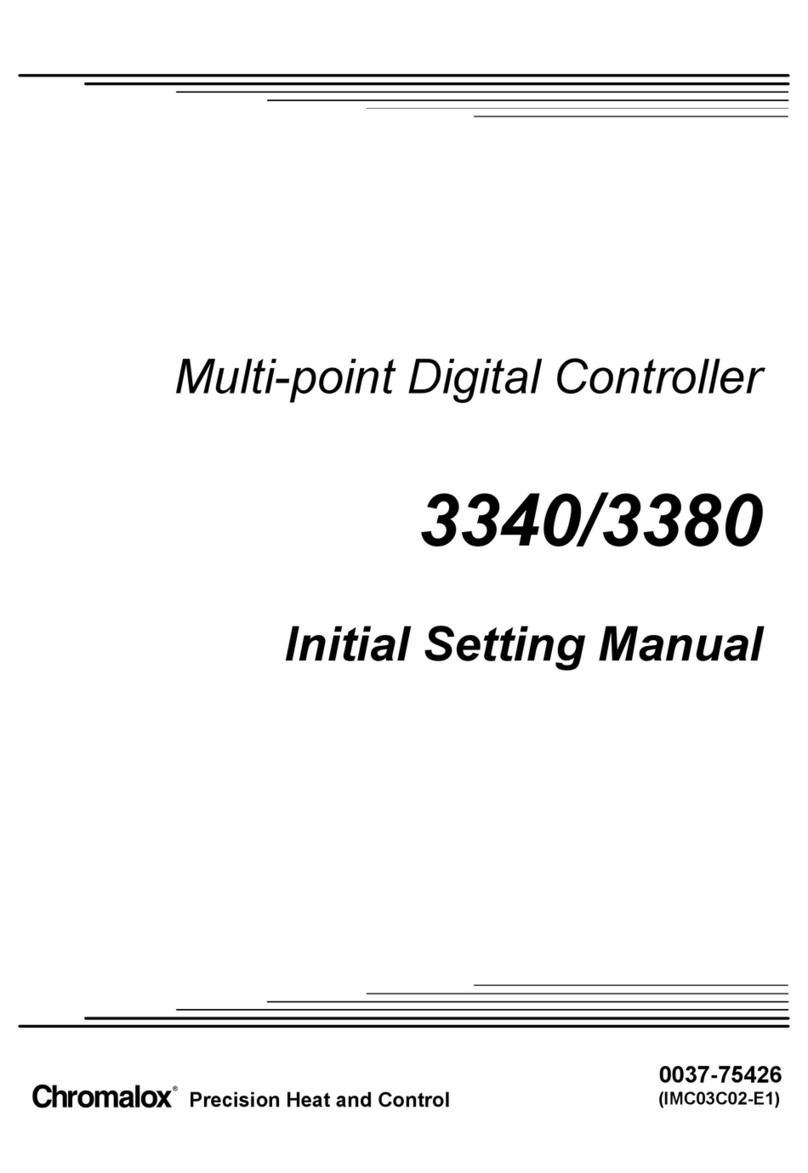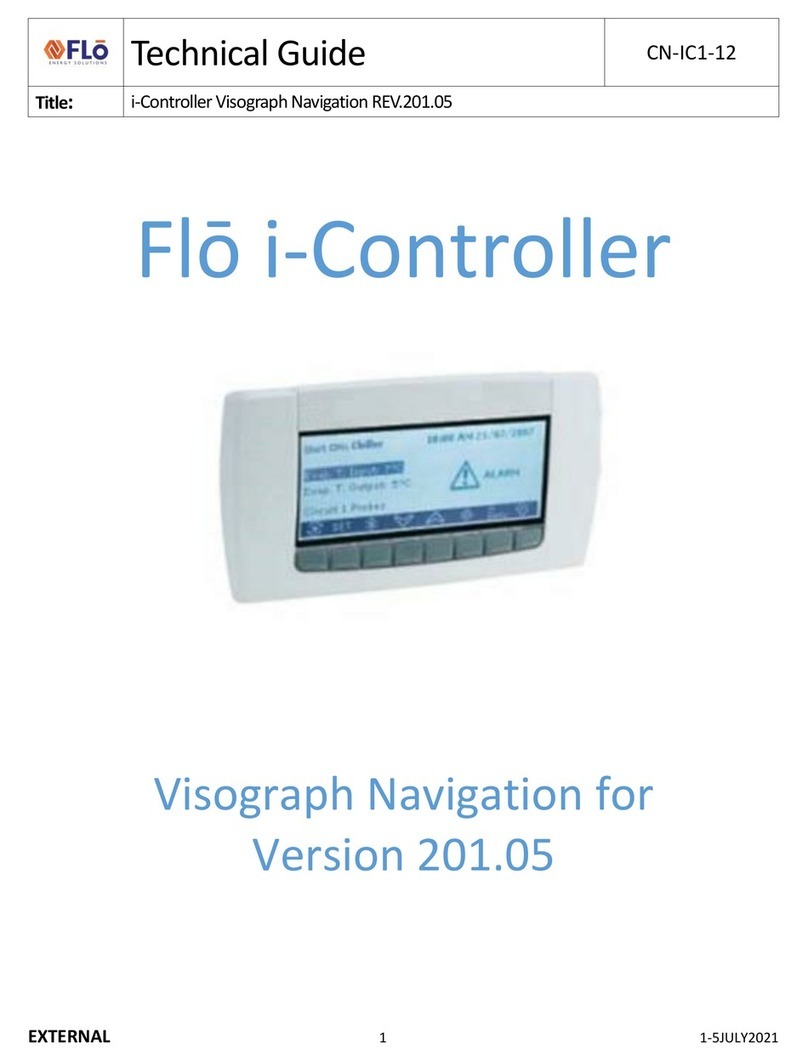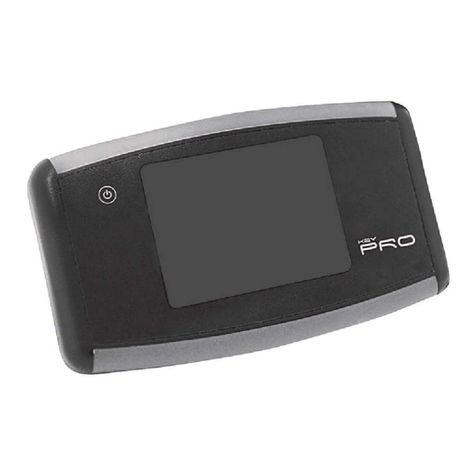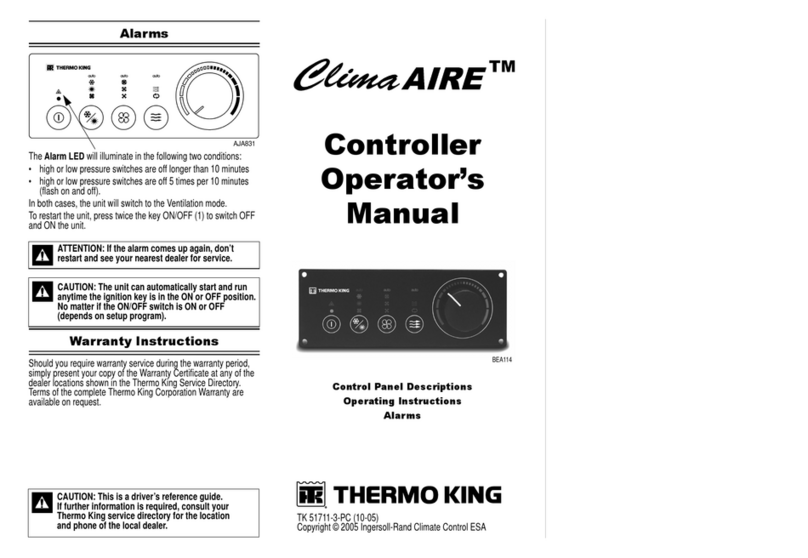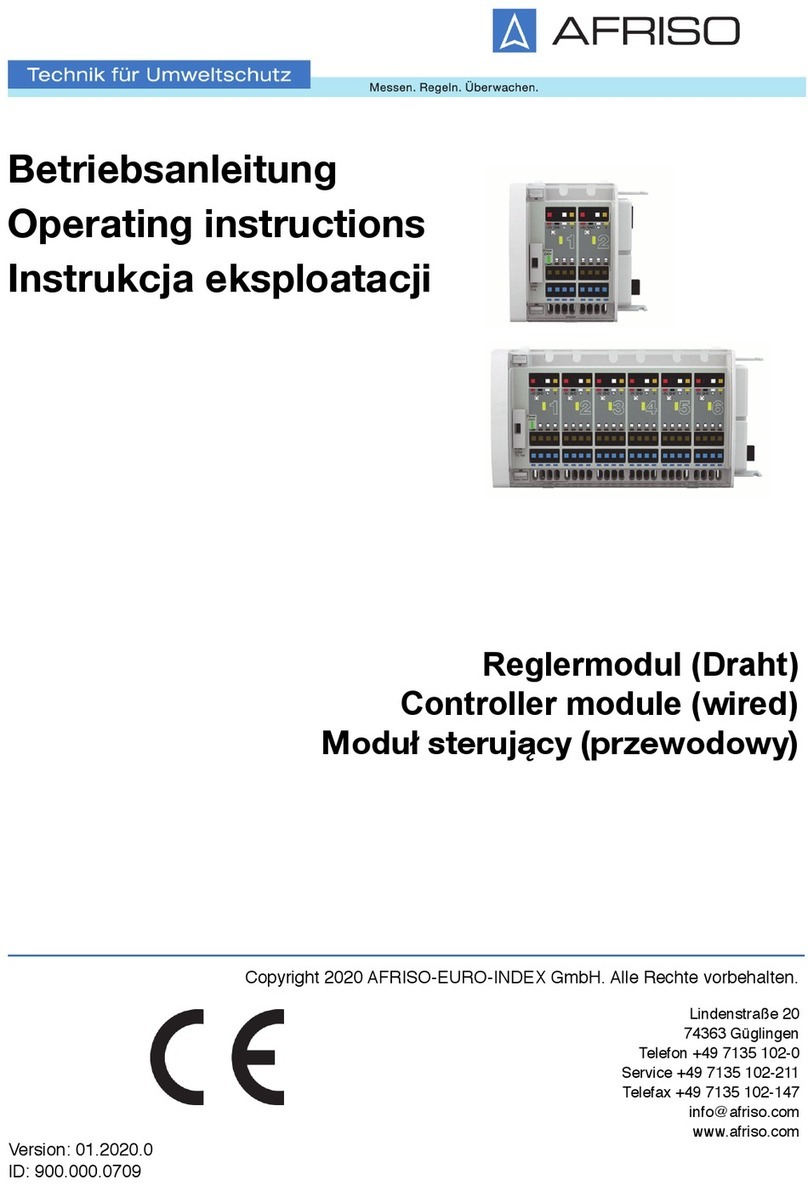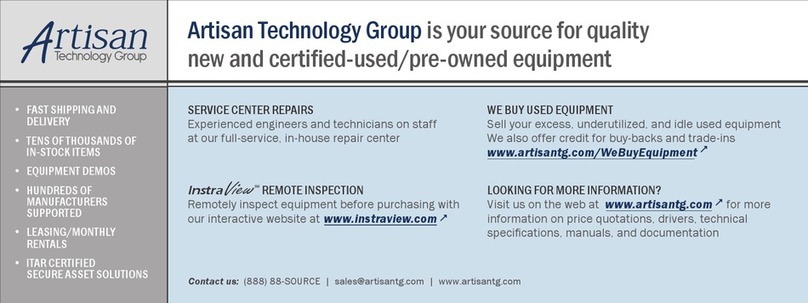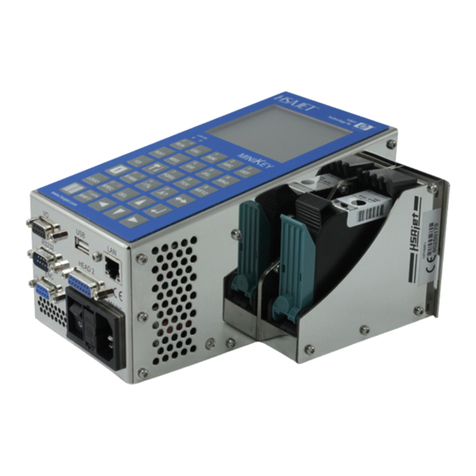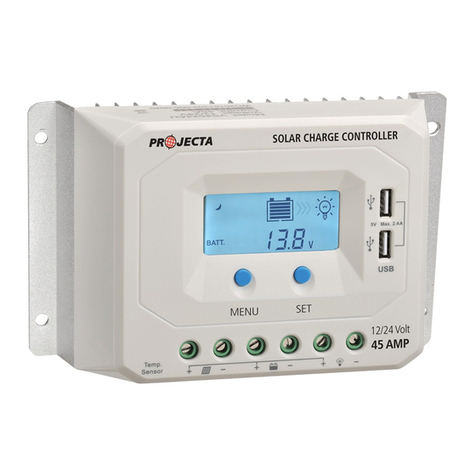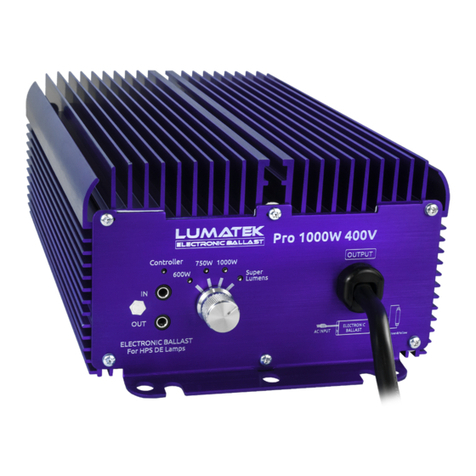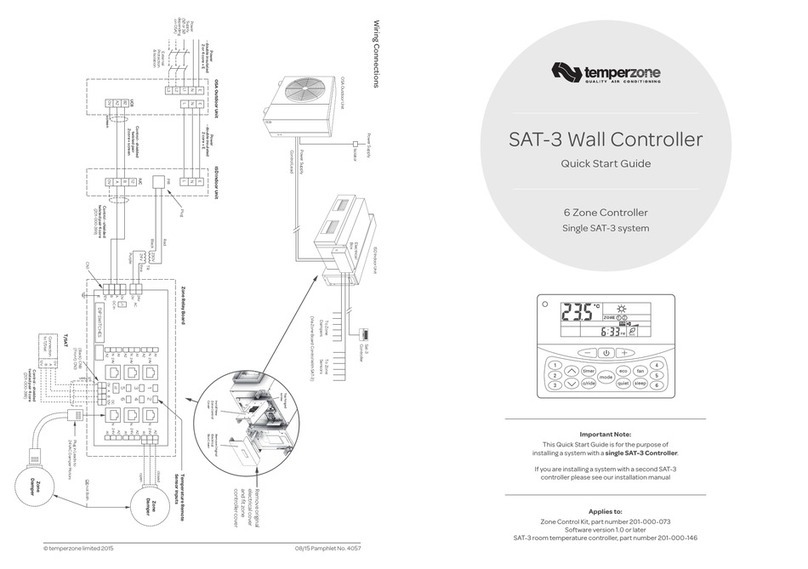Promation Engineering P2-120N4-RC User manual

Installation & Operation
Manual
This IOM is for the following
ProMation Engineering Products:
P2-120N4-RC
P2-230N4-RC
P3-120N4-RC
P3-230N4-RC

This page intentionally left blank

FM_P213 HV N4-RC-RO_Ver C 053117
Table of Contents
2 ................... Product Specifications
3 ................... Shipping and Handling
3 ................... Product Mounting and Setup
3 ................... Installation Notes
3 ................... Operation Notes
4 ................... Wiring Diagram
5 ................... Adjusting the actuator CW position
6 ................... Adjusting the actuator CCW position
7 ................... Adjusting the actuator Auxiliary Switches
8 ................... Mechanical Data
9 ................... Mechanical Data
10 .................. Commissioning
Page 1 of 10 P2/3 HV-RC 2 Position Series
Field Manual
P2/3 HV-RC
2 Position Control
ISO5211 F07 8P22
P
3
-
1
2
0
N
4
-
R
C

FM_P213 HV N4-RC-RO_Ver C 053117
Introduction
This document provides necessary information for set-up, calibration, testing and use of the P Series quarter-turn
electric actuators stated on the cover page. Each unit is shipped from the factory with initial calibration of mechanical
stops, cams and switches completed for 0-90 degree operation. However, these are general settings and serve as
a starting point for proper calibration of the actuator in its real-world application.
Safety
Safety is a basic factor any time you maintain and operate mechanical equipment. Appropriate handling methods
and proper use of tools and clothes can help prevent serious accidents -- accidents which can cause injuries
to you or a fellow worker. This manual was created to enable a trained user to install, adjust and troubleshoot
your ProMation actuator.
Only competent and trained personnel should install, maintain and operate ProMation actuators. Any work
related to this actuator must be carried out in accordance with this manual and related codes and regulations.
Local workplace health and safety rules should always be followed.
Duty cycle
Duty cycle is the percent of time that an actuator spends running as a fraction of the total time. Duty Cycle is
directly related to heat; excessively repositioning an actuator typically results in motor overheating which can
cause permanent damage and/or reduced service life.
Duty cycle can be calculated as follows:
(example P2 series actuator running 3 seconds ON and 30 seconds OFF)
Runtime = 3s, Total time = 3s + 30s = 33s, therefore this duty cycle would be 9% (3/33)
Additionally, ProMation P series actuators are designed for a maximum of 1200 starts per hour (one start every
3 seconds maximum).
Page 2 of 10 P2/3 HV-RC 2 Position Series
P2/3 LV N4
MAX distance between Actuator and Supply (feet)
Actuator P2 P3
Voltage 24VAC/VDC 24VAC/VDC
4.5A 5.0A
18 -- --
16 58 52
14 93 84
12 143 128
10 242 218
8362 326
Wire
Gage
Amps
Wire Sizing Chart
Actuator Specifi cations P2 P3
Torque “lb/Nm 800”lbs/90Nm 1335”lbs/150Nm
Supply Voltage 12vac/vdc 24vac/vdc 12vac/vdc 24vac/vdc
Max Inrush Current 5.2A 4.5A 4.9A 5.0A
Running Current 3.4A 2.2A 4.4A 2.4A
Motor DC Brush Type
Runtime (90°@60Hz/vdc) 15 sec 22 sec
Runtime (90O@50Hz) 15 sec 22 sec
Duty Cycle 75%
Motor Starts 1200 per hour
Weight 26lbs/12kg
Mechanical Connections ISO5211 F07 8pt 22mm
Electrical Entry (2) 3/4” NPT
Electrical Terminations 12-16ga
Environmental Rating NEMA 4/4X
Manual Override 5” Handwheel
Control On/Off/Jog
Actuator Case Material Aluminum Alloy, Powder coated
Motor Protection 230°F/110°C Thermal F* Class
*Totally Enclosed Non-Ventilated Motors
Ambient Temperature
Operating Range
-22°F to +125°F
-30°C to +52°C
2 Position
Operation of Relay to Close
(-RC ) Actuator
This unit is designed to drive FULLY
CLOSED (CW) when power is applied
to switchcard terminal 4. When power
is removed from terminal 4, the unit will
drive FULLY OPEN (CCW). The unit will
not stop in midtravel unless power is
removed from terminals 1 & 2.

FM_P213 HV N4-RC-RO_Ver C 053117
1. This actuator is shipped in the FULLY CW position (2 color position indicator shows
“CLOSE” and the Reference Dimple aligns with “0”). (The “1” mark is the FULLY
CCW position).
2. CONDUIT DEVICES MUST COMPLY WITH ALL APPLICABLE ELECTRICAL
CODES FOR HAZARDOUS LOCATIONS.
LES DISPOSITIFS DE CONDUIT DOIVENT ÊTRE CONFORMÉS
DE TOUS LES CODES ÉLECTRIQUES APPLICABLES POUR
LOCATIONS DANGEREUSES.
3. Storage: This unit should NOT be stored outside unless it is powered up and
has proper conduit terminations. When NOT powered up, it should be stored
in a clean, dry environment at all times.
4. This actuator has been factory calibrated to operate between 0 degrees and
90 degrees. Most quarter-turn products will not require recalibration of these
settings. Check alignment of actuator and driven device. If any travel adjustment is necessary, please refer to pages
7-9 for instructions.
1. Fully CLOSE the valve or damper to which the actuator is to be mounted.
• Keep in mind this actuator rotates CW (as viewed from above the unit) when driving CLOSED.
2. Assemble necessary linkage components and attach the actuator to the driven device.
3. Tighten mounting bolts, making sure actuator is centered on the device drive shaft.
4. Utilize the handwheel to check for unobstructed manual operation from fully CCW to fully CW positions BEFORE
applying power to the unit.
5. Torque Switches (2), if so equipped, are factory set and are NOT adjustable.
6. Make the electrical connections per wiring diagram on page 5 or 6 depending on your model.
• Connect POWER AND CONTROL to terminals marked 1, 2, 4, and 6.
• Terminals 7-12 on the switch card (430-10100) are for the (adjustable) aux switches. They are dry type Form C
rated 10A @ 250vac MAX.
7. Follow all rules and regulations for installing electrical equipment per applicable electrical code.
8. Do NOT apply power at this time.
• These actuators are designed to be used between a horizontal and upright position. Do NOT mount the assembly with
the actuator top below a horizontal position.
• When installing conduit, use proper techniques for entry into the actuator. Use drip loops to prevent conduit condensate
from entering the actuator.
• Mechanical travel stops are factory calibrated for 90 degree operation. These stops are NOT designed to adjust
mechanical rotation by more than +/- 3 degrees, they are for positioning the handwheel only.
• Both NPT conduit ports MUST use proper equipment to protect the rated integrity of the housing.
• The internal heater is to be used in ALL applications.
• Do NOT install the actuator outdoors or in humid environments unless it is powered up and the heater is functioning.
• Use proper wire size to prevent actuator failure (see chart on page 5 or 6 for proper wire sizing for your model).
• All terminals accept 12-16AWG solid/stranded wire.
• Do NOT parallel wire multiple actuators together without utilizing isolation relays! Contact ProMation
Engineering for a multiple actuator parallel wiring diagram.
NE PAS mettre en parallèle des actionneurs multiples simultanément sans utiliser de relais
d’isolement! Contactez ProMation Engineering pour un diagramme de câblage parallèle à
plusieurs actionneurs.
Page 3 of 10 P2/3 HV-RC 2 Position Series
“1” = CCW
“0” = CW
REFERENCE
DIMPLE
0 and 1 colored for clarity
Shipping and Handling
Product Mounting and Setup
Installation Notes

FM_P213 HV N4-RC-RO_Ver C 053117
On/Off Control
Field wiring and
devices by others
SINGLE PHASE ONLY
Potential between L1 and
L2 must be between 208
and 230VAC single phase
UNE SEULE PHASE
SEULEMENT
Le potentiel entre L1 et
L2 doit être compris entre
208 et 230 VAC en phase
unique
Page 4 of 10 P2/3 HV-RC 2 Position Series
MAX distance between Actuator and Supply (feet)
Actuator P2 P3
Voltage 120VAC 230VAC 120VAC 230VAC
1.8A 0.8A 1.8A 1.2A
16 722 3111 722 2074
14 1166 5026 1166 3351
12 1783 7687 1783 5125
10 3030 13068 3030 8712
84523 19505 4523 13003
Wire
Gage
Amps
Wire Sizing Chart
P2/3 HV N4
Actuator Specifi cations P2 P3
Torque “lb/Nm 800”lbs/90Nm 1335”lbs/150Nm
Supply Voltage 120vac 230vac 120vac 230vac
Max Inrush Current 1.8A 0.8A 1.8A 1.2A
Running Current 1.0A 0.5A 1.2A 1.0A
Motor Split Phase Capacitor
Runtime (90°@60Hz/vdc) 15 sec 22 sec
Runtime (90O@50Hz) 17 sec 26 sec
Duty Cycle 25%
Motor Starts 1200 per hour
Weight 26lbs/12kg (29lbs/13kg w/ -TS)
Mechanical Connections ISO5211 F07 8pt 22mm
Electrical Entry (2) 3/4” NPT
Electrical Terminations 12-16ga
Environmental Rating NEMA 4/4X
Manual Override 5” Handwheel
Control On/Off/Jog
Actuator Case Material Aluminum Alloy, Powder coated
Motor Protection 230°F/110°C Thermal F* Class
*Totally Enclosed Non-Ventilated Motors
Ambient Temperature
Operating Range
-22°F to +125°F
-30°C to +52°C
120VAC 230VAC
Neu L2
Hot L1
GND GND
Motor
Capacitor

FM_P213 HV N4-RC-RO_Ver C 053117
Page 5 of 10 P2/3 HV-RC 2 Position Series
Serious Damage to the actuator will result if the motor is allowed to drive the gear train into the
mechanical stop!! Remove power from this device BEFORE making any travel adjustments.
This actuator has been factory calibrated to operate between 0 degrees and 90 degrees.
Most quarter-turn products will not require recalibration of these settings. Proceed ONLY if
adjustments are required.
COM
NO
NC
CLOSED
LIMIT
SWITCH
LESS
CLOSED
FURTHER
CLOSED
COM
NO
NC
OPEN
LIMIT
SWITCH
LESS
OPEN
FURTHER
OPEN
COM
NO
NC
CW LIMIT SWITCH
LESS
CW
FURTHER
CW
COM
NO
NC
CCW LIMIT SWITCH
LESS
CCW
FURTHER
CCW
CW Mechanical Stop
Cam 1
CW Mechanical Stop
Loosen Mechanical Stop
1. BEFORE power is applied, use a 17mm wrench and a 5mm hex key
to loosen the RIGHT SIDE mechanical stop. This is the CW stop limit
adjustment. Turn the stop screw 5-6 turns CCW to allow electrical cam
stop adjustment without running into the mechanical stop screw.
2. Use the manual hand wheel to position the actuator to your required
CW position. This must be within +/- 3 degrees of the factory setting.
Adjust Cam 1
3. The lower cam is Cam 1, the CW end-of-travel adjustment. Once
the actuator is at its required CW position, with POWER OFF, use a
2.5mm hex key to free up the cam set screw. Once it is free, rotate the
hex key to the RIGHT 10-15 degrees to reset the switch roller arm.
Then snug the set screw up against the camshaft (CW) until slight
pressure is felt. Then SLOWLY rotate the hex key pushing the cam to
the LEFT until you hear the “click” on the bottom switch indicating that
correct adjustment has been achieved. Tighten the set screw.
4. Apply power to the actuator and drive CCW at least 15-20 degrees.
Then drive the actuator CW until the cam stops the electrical travel.
Check to be sure this is the correct CW position you require. Repeat
step 3 if further adjustment is needed.
Tighten Mechanical Stop
5. While holding the 17mm wrench on the RIGHT SIDE jam nut to prevent
the jam nut from locking, turn the 5mm hex key CW until the end of
the stop screw bottoms out against the internal stop boss. Then turn
the hex key ONE FULL TURN CCW before locking that adjustment
with the jam nut. This procedure assures that the actuator reaches
its end of travel electrically before there is any interference from the
mechanical stop.
6. This completes the CW position calibration.
The mechanical stop screw limits handwheel operation ONLY and is NOT to be used as
an electrical travel limiting device.

FM_P213 HV N4-RC-RO_Ver C 053117
Page 6 of 10 P2/3 HV-RC 2 Position Series
The mechanical stop screw limits handwheel operation ONLY and is NOT to be used as
an electrical travel limiting device.
COM
NO
NC
CLOSED
LIMIT
SWITCH
LESS
CLOSED
FURTHER
CLOSED
COM
NO
NC
OPEN
LIMIT
SWITCH
LESS
OPEN
FURTHER
OPEN
COM
NO
NC
CW LIMIT SWITCH
LESS
CW
FURTHER
CW
COM
NO
NC
CCW LIMIT SWITCH
LESS
CCW
FURTHER
CCW
Loosen Mechanical Stop
1. BEFORE power is applied, use a 17mm wrench and a 5mm hex key
to loosen the LEFT SIDE mechanical stop. This is the CCW stop limit
adjustment. Turn the stop screw 5-6 turns CCW to allow electrical cam
stop adjustment without running into the mechanical stop screw.
2. Use the manual hand wheel to position the actuator to your required
CCW position. This must be within +/- 3 degrees of the factory setting.
Adjust Cam 2
3. The second cam is Cam 2, the CCW end-of-travel adjustment. Once
the actuator is at its required CCW position, with POWER OFF, use
a 2.5mm hex key to free up the cam set screw. Once it is free, rotate
the hex key to the LEFT 10-15 degrees to reset the switch roller arm.
Then snug the set screw up against the camshaft (CW) until slight
pressure is felt. Then SLOWLY rotate the hex key pushing the cam to
the RIGHT until you hear the “click” on the second switch indicating
that correct adjustment has been achieved. Tighten the set screw.
4. Apply power to the actuator and drive CW at least 15-20 degrees.
Then drive the actuator CCW until the cam stops the electrical travel.
Check to be sure this is the correct CCW position you require. Repeat
step 3 if further adjustment is needed.
Tighten Mechanical Stop
5. While holding the 17mm wrench on the LEFT SIDE jam nut to prevent
the jam nut from locking, turn the 5mm hex key CW until the end of
the stop screw bottoms out against the internal stop boss. Then turn
the hex key ONE FULL TURN CCW before locking that adjustment
with the jam nut. This procedure assures that the actuator reaches
its end of travel electrically before there is any interference from the
mechanical stop.
6. This completes the CCW position calibration.
CCW Mechanical Stop
Cam 2
CCW Mechanical Stop
Serious Damage to the actuator will result if the motor is allowed to drive the gear train into the
mechanical stop!! Remove power from this device BEFORE making any travel adjustments.
This actuator has been factory calibrated to operate between 0 degrees and 90 degrees.
Most quarter-turn products will not require recalibration of these settings. Proceed ONLY if
adjustments are required.

FM_P213 HV N4-RC-RO_Ver C 053117
Adjust Cam 3
1. The THIRD cam is Cam 3, the CW auxiliary switch adjustment.
Drive the actuator to its CW position. Then use a 2.5mm hex key
to free up the cam set screw. Once it is free, rotate the hex key to
the RIGHT 10-15 degrees to reset the switch roller arm. Then snug
the set screw up against the camshaft (CW) until slight pressure is
felt. Then SLOWLY rotate the hex key and cam to the LEFT until
you hear the “click” on the third switch. Continue to rotate the cam
between 3 and 5 degrees to the LEFT to make sure the auxiliary
cam switch changes state before the actuator reaches its end of
travel electrically. Tighten the cam set screw.
Adjust Cam 4
1. The FOURTH cam is Cam 4, the CCW auxiliary switch adjustment.
Drive the actuator to its CCW position. Then use a 2.5mm hex key
to free up the cam set screw. Once it is free, rotate the hex key to
the LEFT 10-15 degrees to reset the switch roller arm. Then snug
the set screw up against the camshaft (CW) until slight pressure
is felt. Then SLOWLY rotate the hex key to the RIGHT until you
hear the “click” on the fourth switch. Continue to rotate the cam
between 3 and 5 degrees to the RIGHT to make sure the auxiliary
cam switch changes state before the actuator reaches its end of
travel electrically. Tighten the cam set screw.
Cam 3
Cam 4
Page 7 of 10 P2/3 HV-RC 2 Position Series

FM_P213 HV N4-RC-RO_Ver C 053117
Page 8 of 10 P2/3 HV-RC 2 Position Series
1
1
2
2
A A
B B
Drawn By
Finish
Promation Engineering Inc.
16138 Flight Path Drive
Brooksville, Fl 34604
Phone: 352-544-8436
Fax: 352-544-8439
This Document is the property of ProMation Engineering,
Inc. Distribution of this document without the written
consent of the owner is Strictly forbidden.
Failure to comply will incur a liability for Damages.
Checked By
4/8/2015
P2~P3 Dim Data
Rev.
G
NO SCALE Sheet Number: 1
Material
ProMation Engineering, Inc.
KHL
KHL
4/25/2013
P2_3 F07 8P22 DimData.idw
Created:
Last Checked:
Part No.
Dwg. Name
Dimensional Data for P2~P3 Actuators
Engineering Change Notice
Change Date Description Name
04.25.13 Document transferred to Inventor format KHL
11.12.13 Added rounded edges on Drive Coupling Data KHL
04.15.2014 Added tolerance on drive coupling data KHL
10.07.2014 Pushed square dimension to three decimal places KHL
REV
A
B
C
D
E
F
Dimensional Tolerances (Unless Otherwise Noted):
X ±2.5mm [X.X ±.1]
X.X ±.3mm [X.XX ±.01"]
X.XX ±.13mm [X.XXX ±.005"]
ALL TOLERANCE FEATURES IN mm
G04.08.2015 Added Isometric view of Drive Coupling and "Depth" tag for clarity KHL
H
Drive Coupling Fabrication Data
22.00 -.13
.00
+mm
0.866 -0.005
0.000
+in
22.00 -.13
.00
+mm
0.866 -0.005
0.000
+in
30.00 mm
1.181 in
Depth
30.00 mm
1.181 in
229 mm
9.0 in
324 mm
12.8 in
211 mm
8.3 in
123 mm
4.8 in
180 mm
7.1 in
90 mm
3.5 in
287 mm
11.3 in
Add 257mm
[10.1"] to allow
for cover
removal
70 mm
2.8 in
BHC
22 mm
0.9 in
(4) M8x1.25
20mm
0.8"
F07 ISO Flange
(2) 3/4" NPT
EMT Entry
125 mm
4.9 in
86 mm
3.4 in
P2/3 Series Dimensional Data

FM_P213 HV N4-RC-RO_Ver C 053117
P Series Exploded View
(P2/3-120N4 unit is shown)
Easily distinguishable
yellow/red position
indicator
Worm Drive
Heavy Duty
Drive Motor
Easily accessible
switch & cam stacks
Modular
Control
Cards
Clutchless
Override
Handwheel
Aluminum Casting
NEMA 4X Protection
Aluminum Casting
NEMA 4X Protection
Epicyclic Gearing
Mechanical Stop
Screws (2)
NEMA 4X
Cover Seal
Switch sequencing data is provided in the table
below to show the change-of-state points during
the rotation of the actuator from CCW to CW
and back again. The red bar shows when that
terminal makes with its respective common.
Switches 1 and 2 are set at the factory and
should NOT be changed. The INCLUDED
auxiliary switches SW3 & SW4 are for terminals
7thru12andthosesetpointsmaybemodied
if need be. When so optioned, SW5 & SW6
auxiliary switches are initially set to function
the same as auxiliary switches SW3 & SW4.
Switch Logic Map and
Switch/Cam Arrangement
12
11
10
9
8
7
SW3 CW AUX
(Factory Set - Adj)
SW4 CCW AUX
(Factory Set - Adj)
}
}
Closed Switch Common
Open Switch Common
Open
Closed
Not Open
-5°0°
CW CCW
85°
5°90°95°
Not Closed
}
Used by
Controller
Page 9 of 10 P2/3 HV-RC 2 Position Series

FM_P213 HV N4-RC-RO_Ver C 053117
After completing all mounting and wiring procedures and main power is available, it is now possible to commission
the actuator.
1. Utilize the handwheel to rotate the actuator and damper, valve or other connected device through its full travel from
fully CW to fully CCW and back again to check for any possible interference.
• Do NOT utilize any mechanical advantage devices to rotate the handwheel (pipes, wrenches, extension bars, etc.).
2. Manually position the actuator to its mid-stroke position.
3. Make certain the 3 wire orange plug is fully seated on the 3-pin receptacle on the switch board.
4. Apply correct power to the unit.
4.A Measure correct power on terminals 1 (Hot / L1) & 2 (Neu / L2) on the switch board.
4.B Measure correct power on the two heater terminals on the switch board.
5. CommandtheelddevicetogenerateaCCWsignal.TheactuatorrotatesinaCCWdirection(asviewedfromabove).
• Measure terminals 2 and 6 for correct voltage (matching that measured in step 4.A).
• Actuator will stop when it reaches it’s fully CCW position.
6. Remove the CCW signal. The actuator rotates in a CW direction (as viewed from above).
• Actuator will stop when it reaches it’s fully CW position.
7. Actuator is now commissioned and operational.
Page 10 of 10 P2/3 HV-RC 2 Position Series

ProMation Engineering, Inc. 16138 Flight Path Drive Brooksville, FL 34604 Phone (352) 544-8436 Fax (352) 544-8439
www.promationei.com

IOM Template Master.indd
Industrial Applications
ProMationEngineeringactuatorshavebeeninstalledtooperateprocesscontrolssuchasbutterfly
valves, ball valves, high performance valves, plug valves, gate valves and dampers, in a broad
range of demanding industrial applications.
Power
Generation
Water
Processes Mining Oil and Gas Agriculture Chemicals
16138 Flight Path Drive
Brooksville, FL 34604
Phone (352) 544-8436 Fax (352) 544-8439
email: sales@promationei.com
Complete Support
Full Documentation
Weoffercompletewiringdiagrams,eldinstallationmanualsandsetup
documentation for all our products, both in printed and digital form. We
regularly host customized educational webinars for our customers.
RapidQuote
Most quotes and estimates are generated within hours of the request.
ProMation Engineering Services
ProMation Engineering can provide design and technical services for
OEM’s, projects with customized requirements and specialized operations.
ProMation Engineering is committed to providing superior customer support
for your sales, project management and installation teams. Contact us today.
ProMation Engineering follows a policy of continual product updates and enhancements. Our website
is the best place to obtain the latest product documentation, including the wiring diagrams for these
controllers. Visit us at www.promationei.com or use the code to link to the site.
FM_P213 HV N4-RC-RO_Ver C 053117
This manual suits for next models
3
Table of contents
Other Promation Engineering Controllers manuals
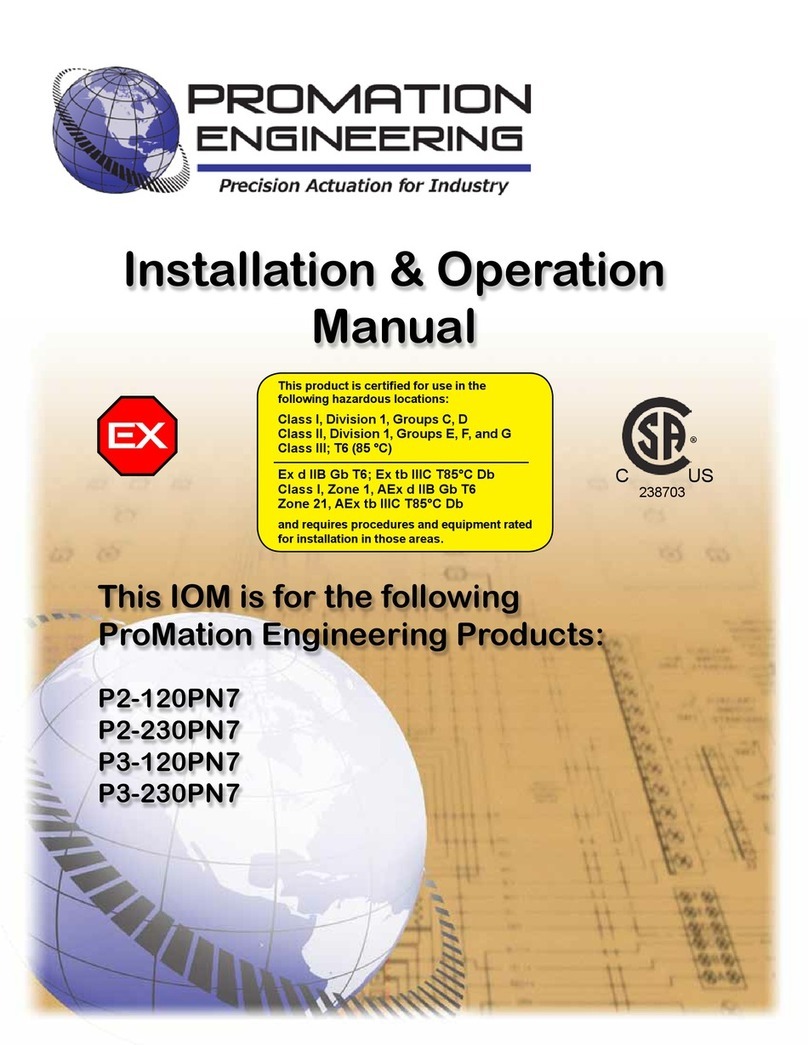
Promation Engineering
Promation Engineering P2 Series User manual
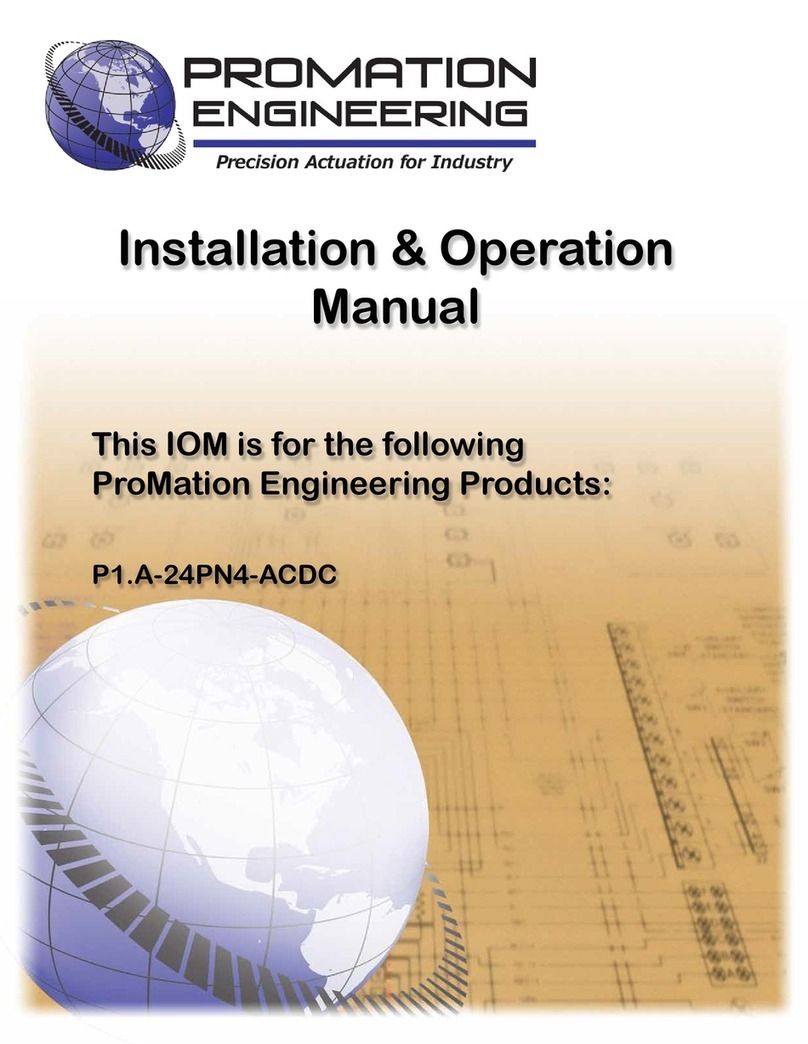
Promation Engineering
Promation Engineering P1.A Series User manual
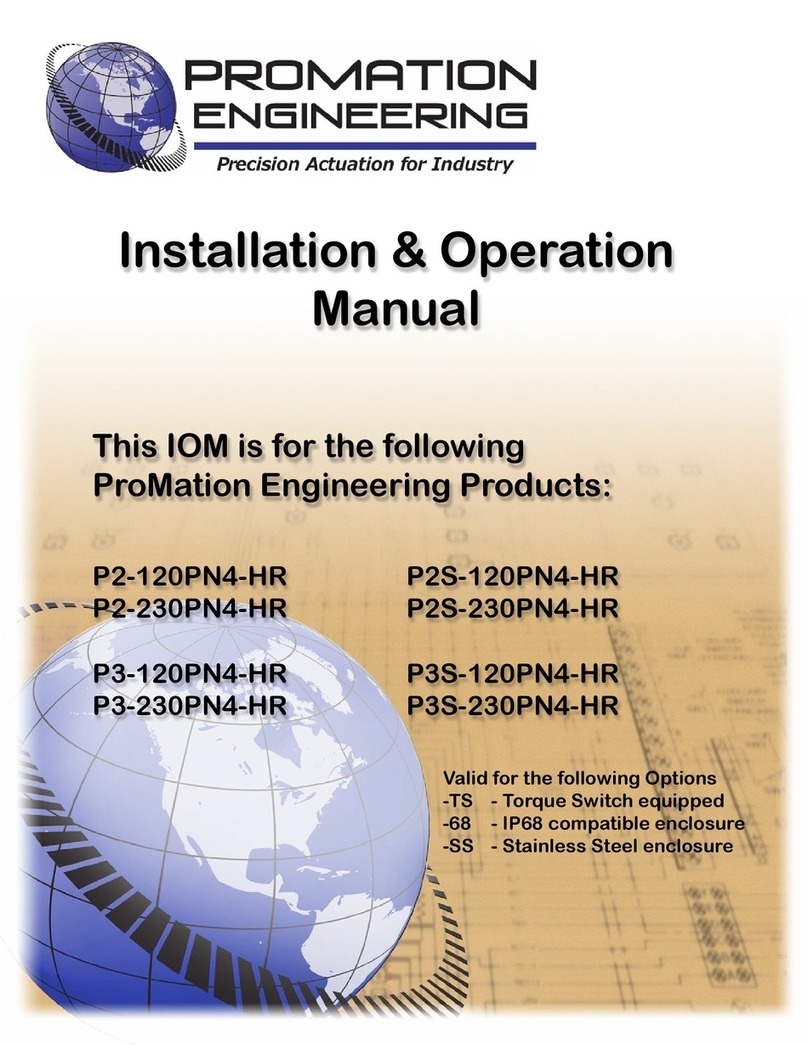
Promation Engineering
Promation Engineering P2-120PN4-HR User manual

Promation Engineering
Promation Engineering P1-12VN4 AC User manual
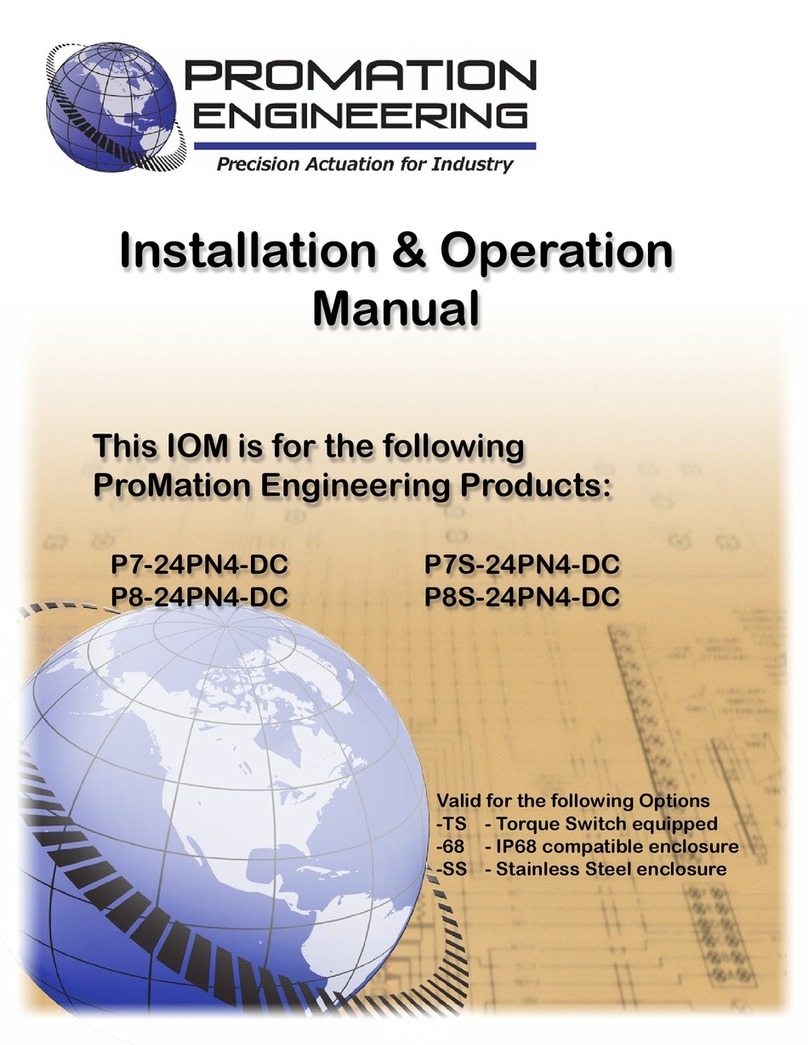
Promation Engineering
Promation Engineering P7-24PN4-DC User manual

Promation Engineering
Promation Engineering P1 A P Series User manual

Promation Engineering
Promation Engineering P7-120PN4-HR User manual
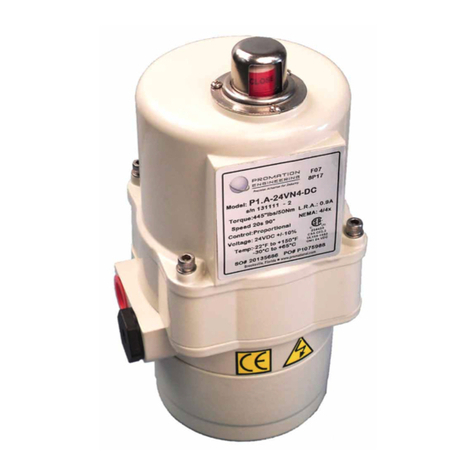
Promation Engineering
Promation Engineering P1.A Series User manual
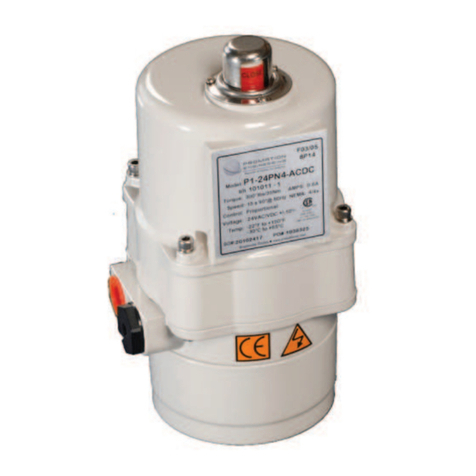
Promation Engineering
Promation Engineering P1 A P-XOV Series User manual
